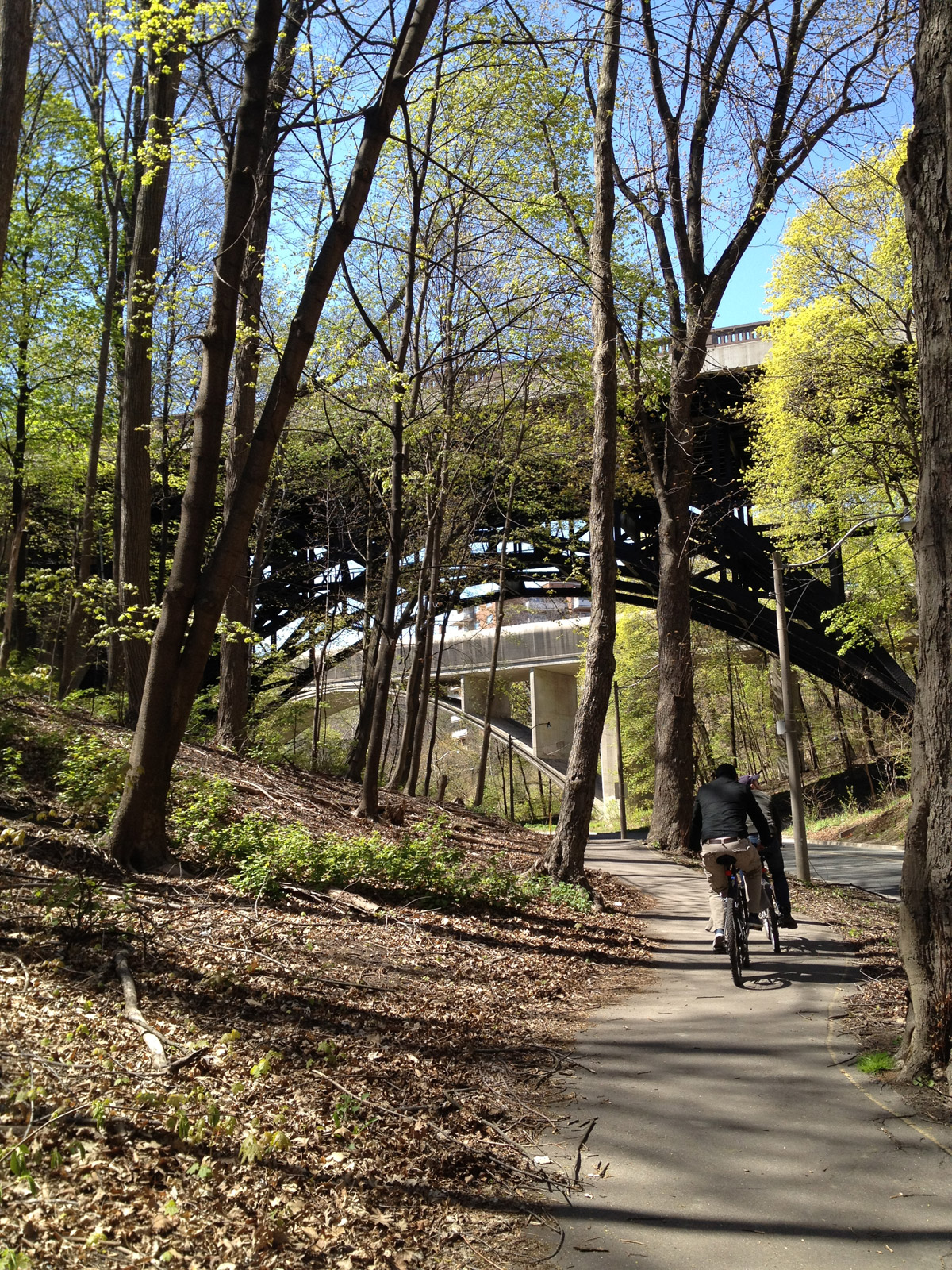TORONTO – In a 37-1 vote, Toronto city council has approved a multi-use cycling and pedestrian path that will connect Toronto from Brampton to Scarborough.

The Pan Am Path – winding throughout the city, along the Humber River, waterfront and Don River Valley, reaching all the way to Rouge River – will be built in time for the 2015 Toronto Pan Am/Parapan Am Games, as one of the Games’ legacy projects.
A group of Toronto artists, entrepreneurs, public officials and urban planners – together known as the Friends of the Pan Am Path – dreamed up the idea for the path nine months ago.
They say the path will bring together residents and tourists, all while supporting local businesses and artists – showcasing the vibrant communities the path passes through.
The path will bring together art and sport as well as bridge the urban-suburban divide, said artist and community organizer Devon Ostrom, a founding member of the Friends of the Pan Am Path.
The route will pass by several venues for the Games, including the Etobicoke Olympium, Exhibition Place, the Athlete’s Village, Toronto Pan Am Park and the Pan Am sports centre in Scarborough.
Toronto already boasts numerous multi-use trails in and around the city, including the Humber Valley and Don River Valley trail systems.
However, many trails in the city come to an abrupt end, forcing cyclists, runners and dog walkers to circle back, or continue on roads with vehicle access.
The Pan Am Path will connect over 80km of trails, the majority of which already exist. Only five to ten per cent of the entire trail would be new construction. The group asked for $1.9 million in municipal funding to cover construction costs, signage, resurfacing and start-up money.
To date, the path proposal has been met with widespread support.
A June staff report recommended that city council approve the path initiative, calling it a highly visible project that would be used by hundreds of thousands of residents and tourists every year “for active transportation and recreation purposes.”
Several community members have spoken out in support of the path, urging city council to approve the plan.
“This project is simple, but truly powerful in its feasibility and impact,” Denise Pinto, operations director for Jane’s Walk, said in a letter to the city’s executive committee last month.
- Life in the forest: How Stanley Park’s longest resident survived a changing landscape
- ‘Love at first sight’: Snow leopard at Toronto Zoo pregnant for 1st time
- Carbon rebate labelling in bank deposits fuelling confusion, minister says
- Buzz kill? Gen Z less interested in coffee than older Canadians, survey shows
“The Pan Am Path will help bridge the divide between our downtown and the inner suburbs, promoting active transportation and increased walkability and in turn improving the health of our city’s residents,” said Pinto.
On July 3, the plan was approved with unanimous support by Toronto’s executive committee.
In addition to promoting active and healthy living, the path will connect residents, businesses and artists in seven of Toronto’s 13 priority neighbourhoods, or Neighbourhood Improvement Areas (NIAs) –currently underserved in terms of economic opportunities, investments and infrastructure. These designated neighbourhoods are the focus of a city plan to “advance equitable outcomes for all neighbourhoods,” through targeted investments in outdoor space and recreational facilities, and engaging local businesses and community groups in neighbourhood planning.
Councillor Mike Layton said the path will open up Toronto’s neighbourhoods. “It allows us to showcase all that is great about Toronto to visitors as well as those who live here,” said Layton.
“Priority neighbourhoods are characterised by imbalance of recreation spaces,” said Ostrom.
The path will help open up and highlight these diverse and vibrant communities, Ostrom told Global News. “A lot of it will be led on the ground by in those neighbourhoods,” he said.
The path will also feature 12 community art installation sites along the route, showcasing local artists.
Ostrom said funding for the art and cultural aspects of the path will come from various sources. The Ontario Trillium Foundation has already provided a $67,000 grant to Friends of the Pan Am Path.
The Pan Am Games will take place from July 10 to 26, 2015 and followed by the Parapan Am Games from August 7 to 14, 2015.
The Games are expected to draw upwards of 10,000 athletes and 250,000 visitors.
51 sports will be featured in 13 municipalities, including Toronto, Ajax, Hamilton, Markham, Mississauga and Oshawa.






Comments